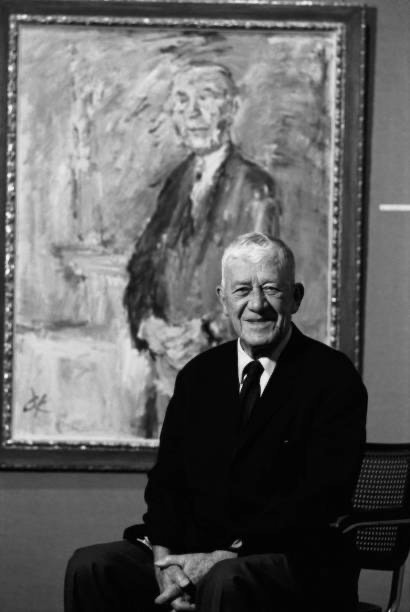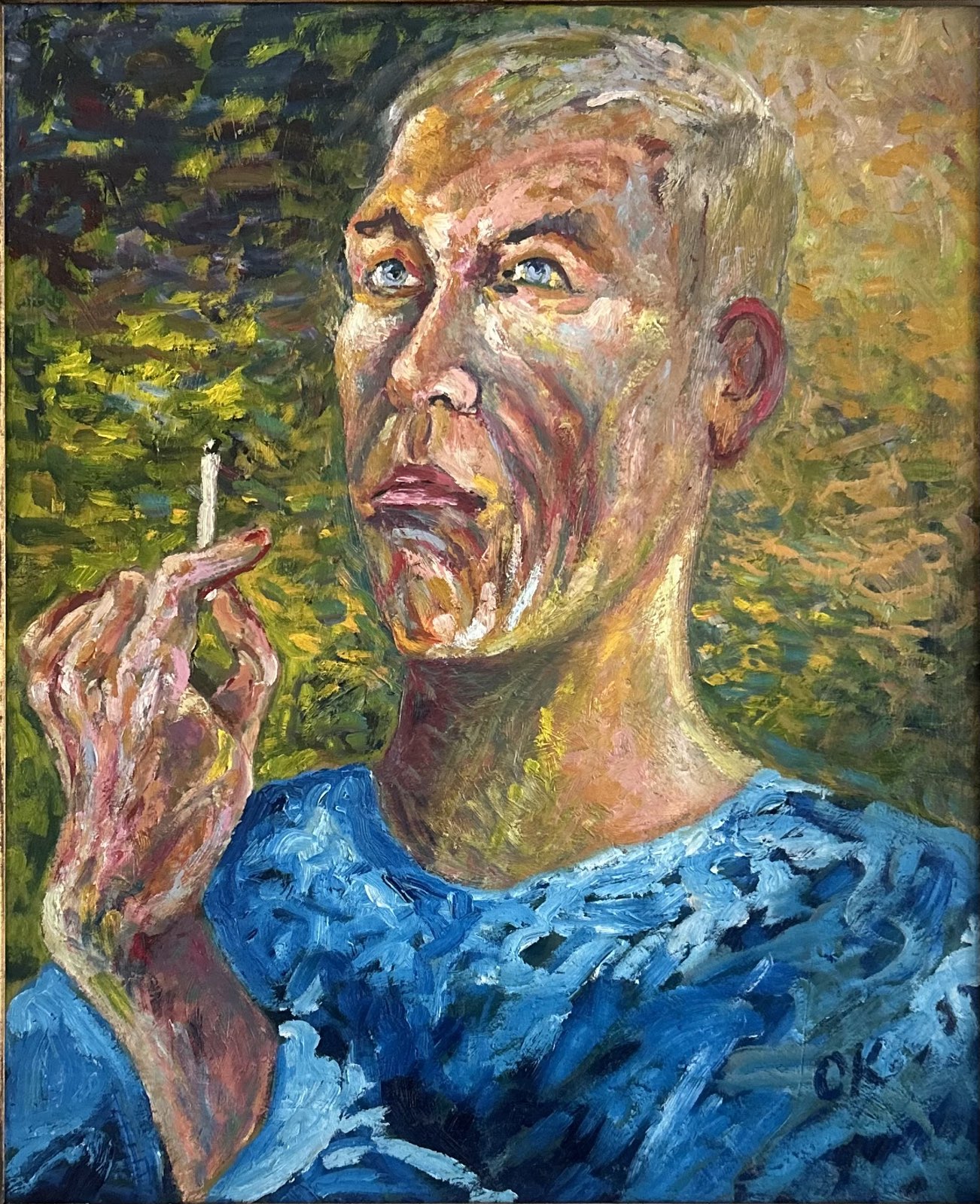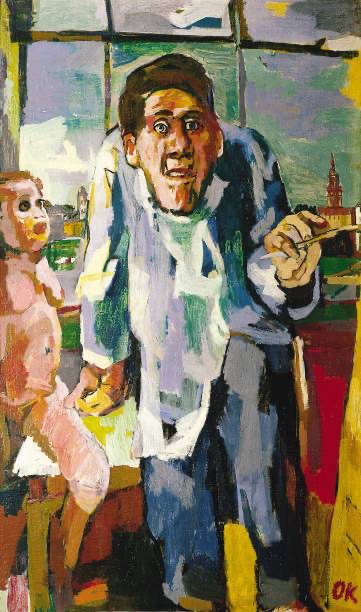Art Gallery
Explore the vibrant world of Oskar Kokoschka's masterpieces.
Portrait of Konrad Adenauer (1966)

In this 1966 portrait, Oskar Kokoschka captures Konrad Adenauer not just as a historical figure, but as a deeply human presence carved by the trials of a turbulent century. Adenauer, the first Chancellor of West Germany after World War II, is depicted here at the end of his political life — aged, reflective, yet radiating the quiet authority of a man who bore the weight of reconstruction and reconciliation.
Kokoschka’s expressionist brushwork breaks away from idealized representations, offering instead a raw, textured portrayal of dignity forged through hardship. The lines etched across Adenauer’s face mirror the fractures of a continent still healing. The gaze is firm but distant, as if turned toward the memory of decisions made, alliances brokered, and a nation rebuilt from ruins.
Painted in the twilight of Kokoschka’s career, this work is less a formal portrait and more a psychological encounter — a meeting of two men shaped by war, ideology, and the burden of legacy. The subdued palette and assertive strokes emphasize a kind of moral gravity, as if the canvas itself had absorbed decades of consequence. It’s not just a portrait of a chancellor, but a meditation on leadership, mortality, and the paradox of power in a postwar world.
Kokoschka’s expressionist brushwork breaks away from idealized representations, offering instead a raw, textured portrayal of dignity forged through hardship. The lines etched across Adenauer’s face mirror the fractures of a continent still healing. The gaze is firm but distant, as if turned toward the memory of decisions made, alliances brokered, and a nation rebuilt from ruins.
Painted in the twilight of Kokoschka’s career, this work is less a formal portrait and more a psychological encounter — a meeting of two men shaped by war, ideology, and the burden of legacy. The subdued palette and assertive strokes emphasize a kind of moral gravity, as if the canvas itself had absorbed decades of consequence. It’s not just a portrait of a chancellor, but a meditation on leadership, mortality, and the paradox of power in a postwar world.
Self-Portrait with a Cigarette – Oskar Kokoschka (1886–1980)

Self-Portrait with a Cigarette is a painting created by Austrian artist Oskar Kokoschka between 1935 and 1936. In this intense and expressive work, Kokoschka depicts himself holding a cigarette, capturing both his inner turmoil and reflective nature. The piece offers a raw glimpse into the artist’s psyche during a time of personal and political upheaval in Europe.
In 1937, the painting was displayed in the infamous Nazi exhibition “Degenerate Art” (Entartete Kunst), which aimed to discredit modernist and avant-garde movements seen as threats to the regime’s ideals. Like many works featured in the show, it faced possible confiscation or destruction—but was fortunately recovered by the artist before it disappeared.
In 1937, the painting was displayed in the infamous Nazi exhibition “Degenerate Art” (Entartete Kunst), which aimed to discredit modernist and avant-garde movements seen as threats to the regime’s ideals. Like many works featured in the show, it faced possible confiscation or destruction—but was fortunately recovered by the artist before it disappeared.
Self-Portrait with Doll (1920)

This haunting self-portrait by Austrian expressionist Oskar Kokoschka captures one of the most psychologically intense moments of his life. Painted in 1920, the work features a life-sized doll created in the image of Alma Mahler, Kokoschka’s former lover, whom he was obsessively attached to after their separation. Rather than a traditional depiction of the self, the portrait reveals a fractured emotional world — the presence of the doll not only reflects longing and delusion, but serves as a symbol of control, regret, and isolation.
The painting emerged after Kokoschka’s traumatic experiences in World War I, where he suffered physical wounds and deep psychological scars. This image, blending the real and the artificial, shows a man clinging to an illusion of love to avoid facing abandonment and loss. It is as much a portrait of the artist’s internal collapse as it is a visual exploration of grief, obsession, and postwar trauma. The muted palette and strained composition evoke a desperate intimacy between man and mannequin — a ghost of love that would never return.
The painting emerged after Kokoschka’s traumatic experiences in World War I, where he suffered physical wounds and deep psychological scars. This image, blending the real and the artificial, shows a man clinging to an illusion of love to avoid facing abandonment and loss. It is as much a portrait of the artist’s internal collapse as it is a visual exploration of grief, obsession, and postwar trauma. The muted palette and strained composition evoke a desperate intimacy between man and mannequin — a ghost of love that would never return.
